Understanding Pompe Disease: An Ayurvedic Perspective
Understanding Pompe Disease: An Ayurvedic Perspective, also known as glycogen storage disease type II, is a rare genetic disorder that affects muscle and nerve cells. It results from the deficiency of an enzyme called acid alpha-glucosidase, which is crucial for breaking down glycogen into glucose. The accumulation of glycogen in the lysosomes leads to a range of symptoms, primarily muscle weakness and respiratory issues. While conventional medicine primarily focuses on enzyme replacement therapy and supportive care, this blog explores Pompe disease from an Ayurvedic perspective, discussing potential management strategies rooted in ancient wisdom.
Overview of Pompe Disease
Pompe disease can be classified into several forms, including:
- Infantile Onset: Symptoms appear within the first few months of life, leading to severe muscle weakness and heart enlargement (hypertrophic cardiomyopathy). Without treatment, affected infants may face life-threatening complications.
- Late-Onset: Symptoms typically emerge in childhood or adulthood, causing progressive muscle weakness, respiratory issues, and mobility challenges. While this form is generally less severe than the infantile variant, it can still significantly impact quality of life.
Symptoms of Pompe Disease
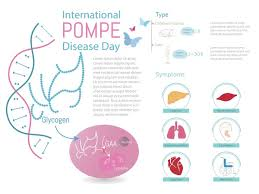
Symptoms vary based on the age of onset and may include:
- Muscle weakness and atrophy
- Respiratory difficulties
- Heart issues (particularly in infantile onset)
- Fatigue
- Difficulty in physical activities
- Enlarged liver and spleen
Conventional Treatment Approaches
The primary treatment for Pompe disease involves enzyme replacement therapy (ERT), which provides the missing enzyme to help reduce glycogen accumulation. Supportive care, including physical therapy and respiratory support, is also vital to manage symptoms and improve quality of life.
Ayurvedic Perspective on Pompe Disease
Ayurveda, the ancient system of medicine from India, offers a holistic approach to health and wellness. It focuses on balancing the body, mind, and spirit, emphasizing individualized treatment plans based on the patient’s unique constitution (Prakriti) and current imbalances (Vikriti).
Key Concepts in Ayurveda
- Doshas: Ayurveda identifies three primary energies, or doshas—Vata, Pitta, and Kapha—that govern physiological and psychological processes. Balancing these doshas is crucial for optimal health.
- Saptadhatu: The seven dhatus (tissues) in the body must be nourished for overall health. They include plasma (rasa), blood (rakta), muscle (mamsa), fat (meda), bone (asthi), nerve (majja), and reproductive tissue (shukra).
- Agni: This term refers to digestive fire, which plays a significant role in metabolism and overall health. A balanced agni is essential for proper nutrient absorption and elimination of toxins (ama).
- Ojas: Ojas represents vitality and immunity. Enhancing ojas can improve overall well-being and resilience against diseases.
Ayurvedic Management Strategies for Pompe Disease
1. Diet and Nutrition
In Ayurveda, diet plays a crucial role in maintaining health. For individuals with Pompe disease, a balanced and nourishing diet is essential to support muscle health and overall vitality.
- Sattvic Foods: Focus on fresh, whole foods that promote clarity and strength. Incorporate whole grains, legumes, fruits, vegetables, nuts, and seeds.
- Protein Sources: Include easily digestible protein sources, such as lentils and dairy, to support muscle tissue.
- Healthy Fats: Incorporate healthy fats like ghee and olive oil to nourish tissues and provide energy.
- Herbs and Spices: Use anti-inflammatory herbs like turmeric, ginger, and ashwagandha, which can support muscle health and overall vitality.
2. Herbal Remedies
Ayurvedic herbs can play a supportive role in managing Pompe disease. Some beneficial herbs include:
- Ashwagandha (Withania somnifera): Known for its adaptogenic properties, ashwagandha can help reduce stress and enhance energy levels.
- Guggulu (Commiphora mukul): This herb may support healthy metabolism and tissue repair.
- Brahmi (Bacopa monnieri): Known for its cognitive benefits, Brahmi may support brain function and reduce fatigue.
- Turmeric (Curcuma longa): With its anti-inflammatory properties, turmeric can help reduce muscle inflammation and support overall health.
3. Panchakarma
Panchakarma is a detoxification and rejuvenation therapy in Ayurveda that involves five main procedures. It can help eliminate toxins and restore balance in the body:
- Abhyanga: A full-body oil massage that nourishes the skin and muscles.
- Swedana: Herbal steam therapy that promotes sweating and detoxification.
- Basti: An enema therapy that helps cleanse the colon and balance doshas.
These treatments can support overall health and well-being, helping to manage the symptoms of Pompe disease.
4. Yoga and Physical Therapy
Gentle yoga practices and physical therapy can be beneficial for individuals with Pompe disease. Specific asanas (postures) can help improve flexibility, strength, and respiratory function.
- Gentle Stretching: Incorporating stretching exercises can help maintain flexibility and reduce muscle stiffness.
- Breathing Exercises: Pranayama (breath control) can enhance lung capacity and support respiratory health.
- Mind-Body Connection: Practices like meditation and mindfulness can help manage stress and improve mental clarity.
Lifestyle Modifications
In addition to dietary and herbal approaches, certain lifestyle modifications can support overall health in individuals with Pompe disease:
- Regular Sleep: Ensure adequate rest to promote recovery and overall vitality.
- Stress Management: Practice stress-reduction techniques such as meditation, yoga, or tai chi to enhance mental well-being.
- Hydration: Stay well-hydrated to support overall health and muscle function.
Integrating Ayurveda with Conventional Care
While Ayurveda offers valuable insights and supportive strategies for managing Pompe disease, it is essential to integrate these approaches with conventional medical care. Collaborating with healthcare providers, including physicians and Ayurvedic practitioners, can ensure a comprehensive treatment plan tailored to individual needs.
Conclusion
Pompe disease presents unique challenges, but a holistic approach rooted in Ayurveda can offer supportive strategies for managing symptoms and enhancing overall well-being. By focusing on diet, herbal remedies, detoxification therapies, and lifestyle modifications, individuals can work towards achieving a balanced state of health. As always, it is crucial to consult with healthcare professionals before making any significant changes to treatment plans. Embracing a holistic approach may not cure Pompe disease, but it can significantly improve the quality of life for those affected by this condition.

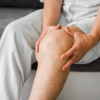


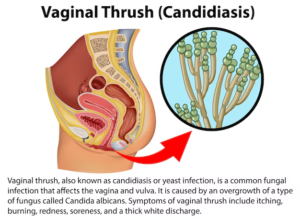
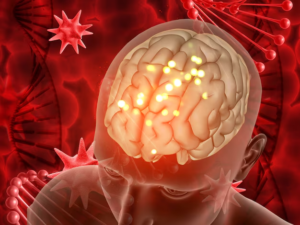
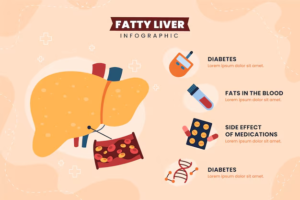
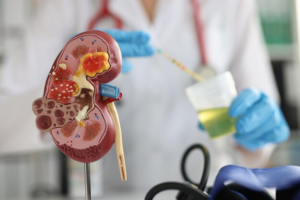
Leave a reply